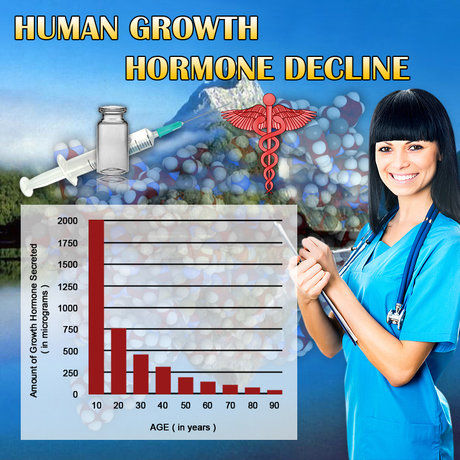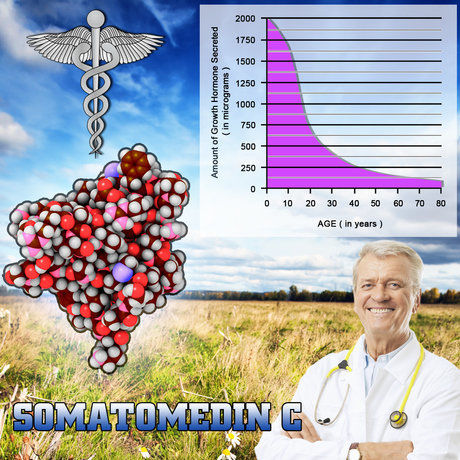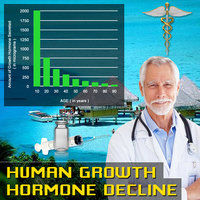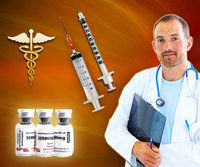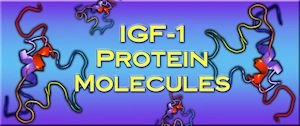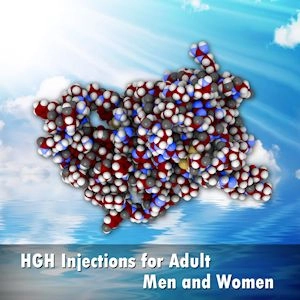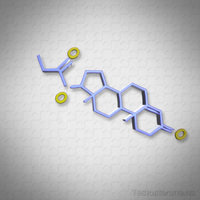Introduction to Hamstring Injuries in Sprinters
Hamstring injuries are a common yet debilitating issue among American male sprinters, often resulting from the explosive power and speed required in sprinting. These injuries not only affect performance but can also lead to prolonged recovery periods if not managed correctly. Sports medicine has developed specific strategies to address these challenges, focusing on both immediate treatment and long-term prevention.
Understanding Hamstring Injuries
The hamstrings, a group of three muscles located at the back of the thigh, are crucial for knee flexion and hip extension—movements essential for sprinting. Injuries typically occur during the late swing phase of the sprint cycle, where the hamstrings are maximally stretched and contracting simultaneously. This can lead to strains or tears, ranging from mild to severe, depending on the extent of muscle fiber damage.
Immediate Treatment Protocols
Upon sustaining a hamstring injury, the immediate application of the RICE protocol—Rest, Ice, Compression, and Elevation—is critical. This helps in reducing initial inflammation and pain. Sports medicine professionals often recommend immobilization in the acute phase, followed by gradual mobilization to prevent stiffness and promote healing. Early intervention by a specialist can significantly influence the recovery trajectory, often involving diagnostic imaging like MRI to assess the injury's severity.
Rehabilitation and Physical Therapy
Rehabilitation is a cornerstone of recovery from hamstring injuries. A tailored physical therapy program, designed by sports medicine experts, focuses on restoring strength, flexibility, and function. This typically includes:
- **Stretching and Flexibility Exercises:** Gentle stretching to improve muscle elasticity and reduce the risk of re-injury.
- **Strengthening Exercises:** Progressive resistance training to rebuild muscle strength, often starting with isometric exercises and advancing to eccentric training, which has been shown to be particularly effective for hamstrings.
- **Functional Training:** Sport-specific drills that mimic sprinting mechanics to ensure a safe return to competition.
Innovative Treatment Modalities
Advancements in sports medicine have introduced innovative treatments such as platelet-rich plasma (PRP) therapy and extracorporeal shockwave therapy (ESWT). PRP therapy involves injecting concentrated platelets from the patient’s own blood into the injured area to accelerate healing. ESWT uses shock waves to promote blood flow and tissue regeneration, showing promising results in reducing recovery time.
Preventive Measures and Long-term Management
Preventing hamstring injuries is as crucial as treating them. Sports medicine advocates for a comprehensive approach that includes:
- **Pre-season Conditioning:** Building a strong foundation of muscle strength and flexibility before the competitive season begins.
- **Proper Warm-up and Cool-down:** Implementing dynamic warm-ups to prepare the muscles for sprinting and cool-down stretches to alleviate post-exercise muscle tightness.
- **Biomechanical Analysis:** Utilizing technology to analyze sprinting technique and identify biomechanical risk factors that may predispose athletes to injuries.
The Role of Nutrition and Hydration
Nutrition plays a vital role in muscle recovery and injury prevention. A diet rich in proteins, vitamins, and minerals supports muscle repair and overall health. Adequate hydration is also essential, as dehydration can impair muscle function and increase injury risk.
Conclusion: A Holistic Approach to Hamstring Injury Management
The management of hamstring injuries in American male sprinters requires a multifaceted approach that combines immediate treatment, comprehensive rehabilitation, innovative therapies, and preventive strategies. By adhering to these sports medicine guidelines, athletes can not only recover more effectively from injuries but also enhance their performance and longevity in the sport. As research and technology continue to advance, the future of sports medicine promises even more effective solutions for managing and preventing hamstring injuries among sprinters.
Contact Us For A Fast And Professional Response

- Preventing Ankle Injuries in Volleyball: Sports Medicine and Technology Solutions [Last Updated On: March 3rd, 2025] [Originally Added On: March 3rd, 2025]
- Snowboarding Wrist Injuries: Prevention, Treatment, and Rehabilitation Strategies for American Males [Last Updated On: March 18th, 2025] [Originally Added On: March 18th, 2025]
- Optimizing Recovery for American Male Martial Artists: A Holistic Sports Medicine Approach [Last Updated On: March 19th, 2025] [Originally Added On: March 19th, 2025]
- Sports Medicine: Enhancing Performance and Longevity in American Male Water Polo Players [Last Updated On: March 19th, 2025] [Originally Added On: March 19th, 2025]
- Sports Medicine's Crucial Role in Preventing Overuse Injuries in American Male Climbers [Last Updated On: March 19th, 2025] [Originally Added On: March 19th, 2025]
- Sports Medicine's Vital Role in Enhancing Triathlete Performance and Health [Last Updated On: March 20th, 2025] [Originally Added On: March 20th, 2025]
- Surfing Injuries in American Males: Prevalence, Prevention, and Sports Medicine Advances [Last Updated On: March 20th, 2025] [Originally Added On: March 20th, 2025]
- Sports Medicine Revolutionizes CrossFit: Enhancing Safety and Performance for American Males [Last Updated On: March 21st, 2025] [Originally Added On: March 21st, 2025]
- Preventing Shoulder Injuries in Lacrosse Goalies: A Comprehensive Sports Medicine Approach [Last Updated On: March 21st, 2025] [Originally Added On: March 21st, 2025]
- Sports Medicine Innovations Aid American Male Rowers with Lower Back Pain Management [Last Updated On: March 21st, 2025] [Originally Added On: March 21st, 2025]
- Sports Medicine: Enhancing Health and Performance in American Male Figure Skating [Last Updated On: March 21st, 2025] [Originally Added On: March 21st, 2025]
- Sports Medicine: Enhancing Performance and Longevity for American Male Table Tennis Players [Last Updated On: March 21st, 2025] [Originally Added On: March 21st, 2025]
- Beach Volleyball Ankle Injuries: Prevention, Training, and Rehabilitation Strategies [Last Updated On: March 22nd, 2025] [Originally Added On: March 22nd, 2025]
- Sports Medicine Enhances Performance and Longevity in American Male Polo Players [Last Updated On: March 22nd, 2025] [Originally Added On: March 22nd, 2025]
- BMX Challenges and Recovery: The Vital Role of Sports Medicine for American Males [Last Updated On: March 23rd, 2025] [Originally Added On: March 23rd, 2025]
- Sports Medicine's Impact on Injury Management in American Male Field Hockey Players [Last Updated On: March 23rd, 2025] [Originally Added On: March 23rd, 2025]
- Ankle Health Strategies for American Male Basketball Point Guards: Prevention to Rehabilitation [Last Updated On: March 23rd, 2025] [Originally Added On: March 23rd, 2025]
- Sports Medicine's Vital Role in Enhancing Soccer Defenders' Recovery and Performance [Last Updated On: March 23rd, 2025] [Originally Added On: March 23rd, 2025]
- Sports Medicine Revolutionizes Recovery for American Male Ice Hockey Players [Last Updated On: March 23rd, 2025] [Originally Added On: March 23rd, 2025]
- Ultimate Frisbee: Knee Health Strategies for American Male Athletes [Last Updated On: March 24th, 2025] [Originally Added On: March 24th, 2025]
- Sports Medicine's Role in Enhancing American Male Fencers' Performance and Longevity [Last Updated On: March 24th, 2025] [Originally Added On: March 24th, 2025]
- Sports Medicine Advances Aid Hip Recovery in American Male Track Cyclists [Last Updated On: March 24th, 2025] [Originally Added On: March 24th, 2025]
- Hamstring Injury Prevention Strategies for American Male Soccer Midfielders [Last Updated On: March 24th, 2025] [Originally Added On: March 24th, 2025]
- Rotator Cuff Injuries in American Male Swimmers: Diagnosis, Treatment, and Prevention [Last Updated On: March 24th, 2025] [Originally Added On: March 24th, 2025]
- Optimizing Recovery for American Football Wide Receivers: A Sports Medicine Approach [Last Updated On: March 24th, 2025] [Originally Added On: March 24th, 2025]
- Sports Medicine's Role in Enhancing American Male Swimmers' Health and Performance [Last Updated On: March 24th, 2025] [Originally Added On: March 24th, 2025]
- Sports Medicine Enhances Career Longevity for American Male Badminton Players [Last Updated On: March 24th, 2025] [Originally Added On: March 24th, 2025]
- Sports Medicine Revolutionizes Training for American Male Cyclists [Last Updated On: March 25th, 2025] [Originally Added On: March 25th, 2025]
- Sports Medicine Enhances Safety and Performance in American Male Trampoline Gymnastics [Last Updated On: March 25th, 2025] [Originally Added On: March 25th, 2025]
- Sports Medicine's Role in Preventing Shin Splints in American Male Runners [Last Updated On: March 25th, 2025] [Originally Added On: March 25th, 2025]
- Managing Groin Injuries in American Male Hockey Players: Strategies and Prevention [Last Updated On: March 25th, 2025] [Originally Added On: March 25th, 2025]
- Sports Medicine Revolutionizes Career Longevity for American Male Baseball Pitchers [Last Updated On: March 26th, 2025] [Originally Added On: March 26th, 2025]
- Sports Medicine Revolutionizes Training and Health for American Male Handball Athletes [Last Updated On: March 26th, 2025] [Originally Added On: March 26th, 2025]
- Sports Medicine Advances Aid Lacrosse Attackmen with Shoulder Injury Prevention and Treatment [Last Updated On: March 26th, 2025] [Originally Added On: March 26th, 2025]
- Cross-Country Skiing: Knee Health Strategies for American Male Skiers [Last Updated On: March 26th, 2025] [Originally Added On: March 26th, 2025]
- Sports Medicine's Role in Preventing Stress Fractures in American Male Runners [Last Updated On: March 26th, 2025] [Originally Added On: March 26th, 2025]
- Optimizing Recovery for American Male Soccer Goalkeepers: A Holistic Approach [Last Updated On: March 26th, 2025] [Originally Added On: March 26th, 2025]
- Preventing Achilles Tendon Injuries in American Male Runners: Sports Medicine Strategies [Last Updated On: March 26th, 2025] [Originally Added On: March 26th, 2025]
- Tendonitis in American Male Tennis Players: Sports Medicine Treatment and Prevention Strategies [Last Updated On: March 26th, 2025] [Originally Added On: March 26th, 2025]
- Lacrosse Midfielders' Hip Health: Sports Medicine Innovations and Rehabilitation Strategies [Last Updated On: March 26th, 2025] [Originally Added On: March 26th, 2025]
- Preventing Back Injuries in American Male Rowers: A Holistic Sports Medicine Approach [Last Updated On: March 27th, 2025] [Originally Added On: March 27th, 2025]
- Speed Skating Muscle Health: Strategies and Innovations for American Male Athletes [Last Updated On: March 27th, 2025] [Originally Added On: March 27th, 2025]
- Sports Medicine Revolutionizes Performance in American Male Volleyball [Last Updated On: March 27th, 2025] [Originally Added On: March 27th, 2025]
- Rugby Sevens' Rise in U.S. and Vital Role of Sports Medicine for Male Athletes [Last Updated On: March 27th, 2025] [Originally Added On: March 27th, 2025]
- Sports Medicine: Enhancing Performance and Health in American Male Track and Field Athletes [Last Updated On: March 28th, 2025] [Originally Added On: March 28th, 2025]
- Sports Medicine: Essential for American Male Rugby Forwards' Health and Performance [Last Updated On: March 28th, 2025] [Originally Added On: March 28th, 2025]
- Sports Medicine Boosts Career Longevity for American Male Baseball Outfielders [Last Updated On: March 29th, 2025] [Originally Added On: March 29th, 2025]
- Sports Medicine's Role in Managing Injuries for American Male Swimmers [Last Updated On: March 29th, 2025] [Originally Added On: March 29th, 2025]
- Knee Health Management for Football Running Backs: Prevention, Treatment, and Rehabilitation [Last Updated On: March 29th, 2025] [Originally Added On: March 29th, 2025]
- Optimizing Recovery for American Male Soccer Forwards: A Comprehensive Approach [Last Updated On: March 29th, 2025] [Originally Added On: March 29th, 2025]
- Sports Medicine: Enhancing Performance and Health in Basketball Forwards [Last Updated On: March 30th, 2025] [Originally Added On: March 30th, 2025]
- Sports Medicine's Role in Enhancing American Male Volleyball Players' Performance and Health [Last Updated On: April 1st, 2025] [Originally Added On: April 1st, 2025]
- Sports Medicine Revolutionizes Performance and Health for American Male Cyclists [Last Updated On: April 1st, 2025] [Originally Added On: April 1st, 2025]
- Sports Medicine Revolutionizes Performance and Health in Male Track and Field Athletes [Last Updated On: April 4th, 2025] [Originally Added On: April 4th, 2025]
- Cross-Country Skiing and Knee Health: Insights for American Male Skiers [Last Updated On: April 5th, 2025] [Originally Added On: April 5th, 2025]
- Sports Medicine: Enhancing Health and Performance for Basketball Forwards [Last Updated On: April 6th, 2025] [Originally Added On: April 6th, 2025]
- Lacrosse Midfielders' Hip Injuries: Sports Medicine's Role in Treatment and Prevention [Last Updated On: April 6th, 2025] [Originally Added On: April 6th, 2025]
- Preventing Achilles Tendon Injuries in American Male Runners: A Sports Medicine Approach [Last Updated On: April 8th, 2025] [Originally Added On: April 8th, 2025]
- Managing Groin Injuries in American Male Hockey: Diagnosis, Treatment, and Prevention Strategies [Last Updated On: April 8th, 2025] [Originally Added On: April 8th, 2025]
- Preventing Hamstring Injuries in American Male Soccer Midfielders: A Comprehensive Guide [Last Updated On: April 9th, 2025] [Originally Added On: April 9th, 2025]
- Sports Medicine: Enhancing Health and Performance in American Male Rugby Forwards [Last Updated On: April 10th, 2025] [Originally Added On: April 10th, 2025]
- Sports Medicine: Extending Careers of American Male Baseball Outfielders [Last Updated On: April 10th, 2025] [Originally Added On: April 10th, 2025]
- Knee Health Strategies for American Football Running Backs: Prevention and Recovery [Last Updated On: April 11th, 2025] [Originally Added On: April 11th, 2025]
- Sports Medicine: Enhancing Performance and Health in American Male Track Athletes [Last Updated On: April 11th, 2025] [Originally Added On: April 11th, 2025]
- Optimizing Recovery for American Male Soccer Forwards: A Comprehensive Guide [Last Updated On: April 12th, 2025] [Originally Added On: April 12th, 2025]
- Sports Medicine Revolutionizes Performance and Health in American Male Cycling [Last Updated On: April 12th, 2025] [Originally Added On: April 12th, 2025]
- Sports Medicine's Role in Enhancing American Male Swimmers' Performance and Health [Last Updated On: April 13th, 2025] [Originally Added On: April 13th, 2025]

